Physical Address
304 North Cardinal St.
Dorchester Center, MA 02124
Cysts occur more frequently within the jaw than in any other bone due to the numerous epithelial cell residues left after tooth formation ▸ these cysts are slow growing and painless (unless they become infected)
These arise from epithelial residues of tooth-forming tissues and include: radicular (dental) and residual cysts ▸ dentigerous cysts ▸ odontogenic keratocysts
These are mainly developmental and arise from epithelium that is not involved in tooth formation
The features are characteristic of slow-growing lesions (i.e. a radiolucent lesion with well-defined cortical margins) ▸ raised intracystic pressures and expansion by tissue fluid transudation results in its circular or oval shape (except for an odontogenic keratocyst) ▸ if the lesion is sufficiently large, then the cortex may become thinned, expanded and then perforated ▸ there is displacement of any adjacent structures (e.g. the tooth roots)
Solitary and aneurysmal bone cysts resemble jaw cysts but have no epithelial lining
This is the most common odontogenic cyst (>50%) and is derived from epithelial remnants of root formation
It develops at the apex of a non-vital tooth with the majority found on the permanent anterior teeth or 1 st molars
Extraction of the causative tooth brings about resolution (if this does not occur it is termed a ‘residual cyst’) ▸ however, many regress without treatment

This arises from reduced enamel epithelium surrounding the crown of an unerupted tooth (therefore it is only found on buried teeth)
Cystic enlargement of the tooth follicle produces a pericoronal radiolucency (attached to the tooth at its neck) with the crown appearing to lie within the cyst lumen
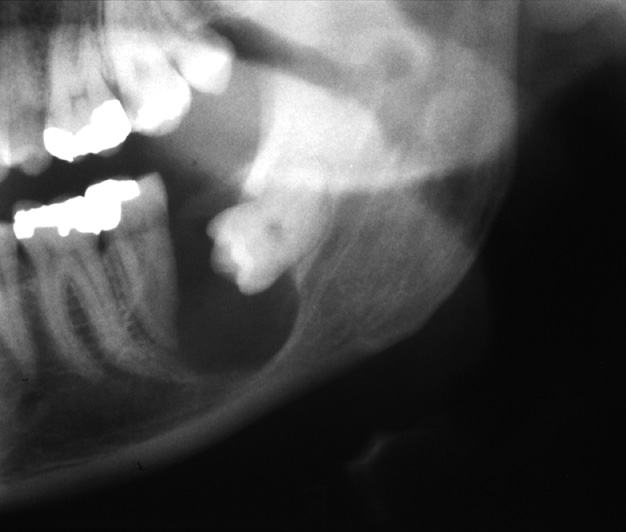
This arises from remnants of the dental lamina ▸ it demonstrates a higher mitotic activity than the oral mucosa and so behaves more like a benign neoplasm ▸ recurrences are common (5–20%)
It appears as a unilocular or multiloculated, elongated, irregularly shaped radiolucency with a scalloped, well-defined margin ▸ it lacks the more ballooning characteristics of other odontogenic cysts (which is an important diagnostic feature) ▸ it frequently occurs within the lower 3 rd molar or ramus region (and may displace an unerupted wisdom tooth where it can resemble a dentigerous cyst)
It demonstrates higher attenuation values of its cyst fluid than other jaw cysts (due to its high protein or keratin content) ▸ NECT: 30–200HU
T1WI: low/intermediate SI ▸ T2WI: high SI
Gorlin–Goltz syndrome: multiple keratocysts and multiple basal cell naevi
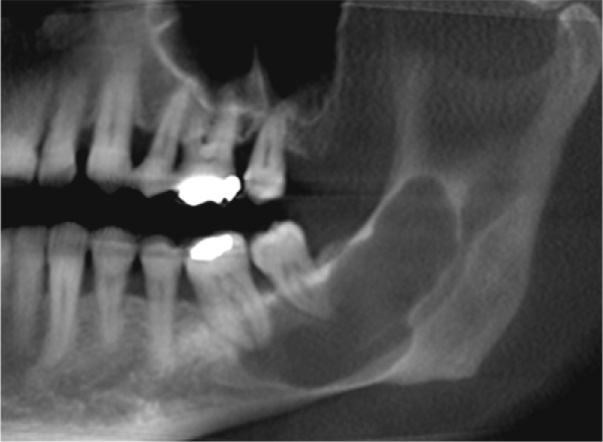
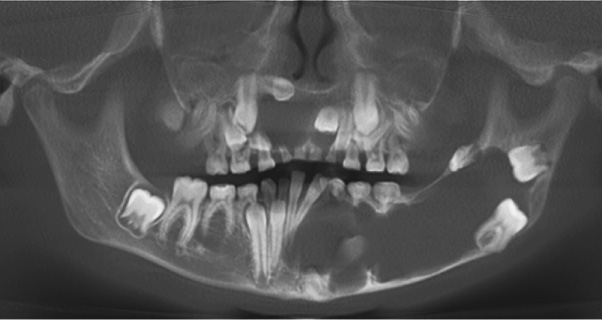
This occurs during the 1 st two decades of life (mainly in the premolar or molar regions of the mandible)
It has a less well-defined margin than that of an odontogenic cyst and its superior border arches up between the roots of the adjacent teeth ▸ tooth displacement and root resorption is uncommon
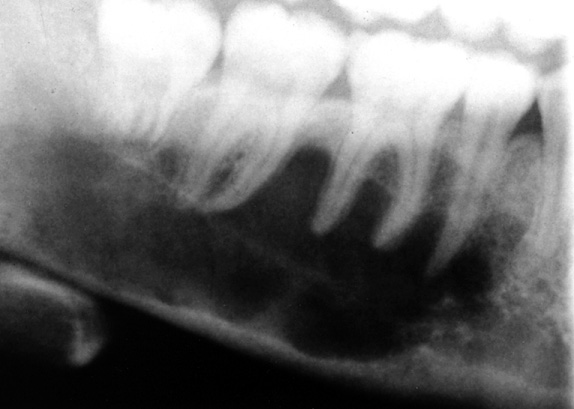
This is considered a reactive lesion of bone (characterized by a fibrous connective tissue stroma containing many cavernous blood-filled spaces) ▸ it is rare and occurs mainly in the young (<30 years old)
It is typically found within the posterior mandible and appears as a well-defined, multilocular, often septated, circular radiolucency ▸ there is often marked cortical expansion
Multiple fluid levels can be seen ▸ T1WI/T2WI: low to intermediate SI
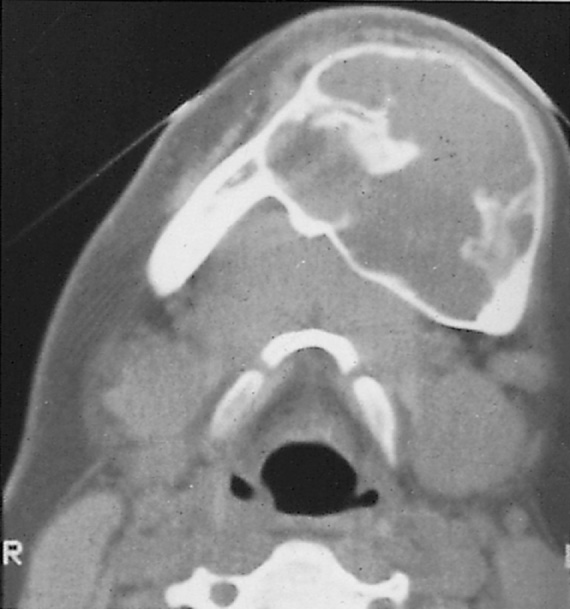
A benign bone-forming tumour ▸ usually slow growing and painless ▸ affects the mandible more commonly than the maxilla (usually located posteromedially)
Gardner's syndrome: multiple osteomas + familial adenomatous polyposis
Osteoma development precedes any intestinal colonic polyposis
A malignant osteoid-producing bone tumour ▸ it is uncommon in the jaw and tends to be slower growing and occurs about 10 years later than seen with a long bone osteosarcoma ▸ the mandible is more commonly affected than the maxilla
Maxillary lesions tend to arise from the alveolar ridge ▸ mandibular lesions tend to arise from the body
A destructive appearance ▸ the tumour can be radiolucent, patchily radio-opaque or sclerotic ▸ a ‘hair-on-end’, ‘sunray’ or ‘onion skin’ appearance (due to an elevated periosteum)
A widened periodontal ligament space: this is an important early sign due to tumour spread along the periodontal ligament ▸ it is also seen with other sarcomas (e.g. fibrosarcoma and Ewing's sarcoma)
This accurately demonstrates any tumour calcification, bone destruction or bone reaction
This assesses any intramedullary or extraosseous tumour component ▸ heterogeneous SI
T1WI: intermediate SI ▸ T2WI: high SI ▸ there may be areas of low SI due to mineralization
A locally invasive benign tumour arising from the odontogenic epithelium ▸ the commonest odontogenic tumour (11%) ▸ 30–50 years of age
Usually found within the molar or ramus mandibular region (commonly centred on the 3 rd molar)
It is locally aggressive (requiring a wide excision margin) and can potentially involve the infratemporal fossa, orbit or skull base ▸ it can rarely undergo malignant transformation with lung metastases
Become a Clinical Tree membership for Full access and enjoy Unlimited articles
If you are a member. Log in here